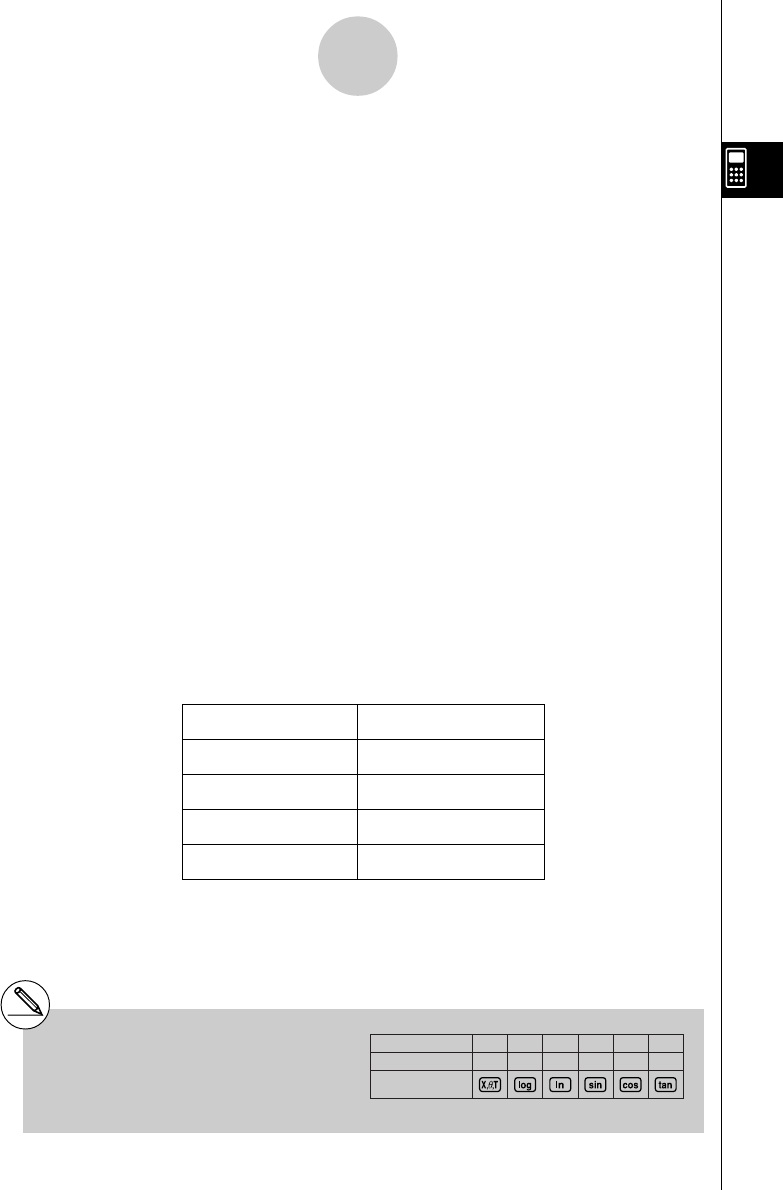
20050401
2-7 Binary, Octal, Decimal, and Hexadecimal
Calculations with Integers
You can use the RUN
•
MAT mode and binary, octal, decimal, and hexadecimal settings to
perform calculations that involve binary, octal, decimal and hexadecimal values. You can also
convert between number systems and perform bitwise operations.
•You cannot use scientific functions in binary, octal, decimal, and hexadecimal calcula-
tions.
•You can use only integers in binary, octal, decimal, and hexadecimal calculations, which
means that fractional values are not allowed. If you input a value that includes a decimal
part, the calculator automatically cuts off the decimal part.
• If you attempt to enter a value that is invalid for the number system (binary, octal,
decimal, hexadecimal) you are using, the calculator displays an error message. The
following shows the numerals that can be used in each number system.
Binary: 0, 1
Octal: 0, 1, 2, 3, 4, 5, 6, 7
Decimal: 0, 1, 2, 3, 4, 5, 6, 7, 8, 9
Hexadecimal: 0, 1, 2, 3, 4, 5, 6, 7, 8, 9, A, B, C, D, E, F
•Negative binary, octal, and hexadecimal values are produced using the two’s comple-
ment of the original value.
• The following are the display capacities for each of the number systems.
Number System Display Capacity
Binary 16 digits
Octal 11 digits
Decimal 10 digits
Hexadecimal 8 digits
2-7-1
Binary, Octal, Decimal, and Hexadecimal Calculations with Integers
# The alphabetic characters used in the
hexadecimal number appear differently on
the display to distinguish them from text
characters.
Normal Text
Hexadecimal Values
Keys
ABCDEF
uvwxyz


















